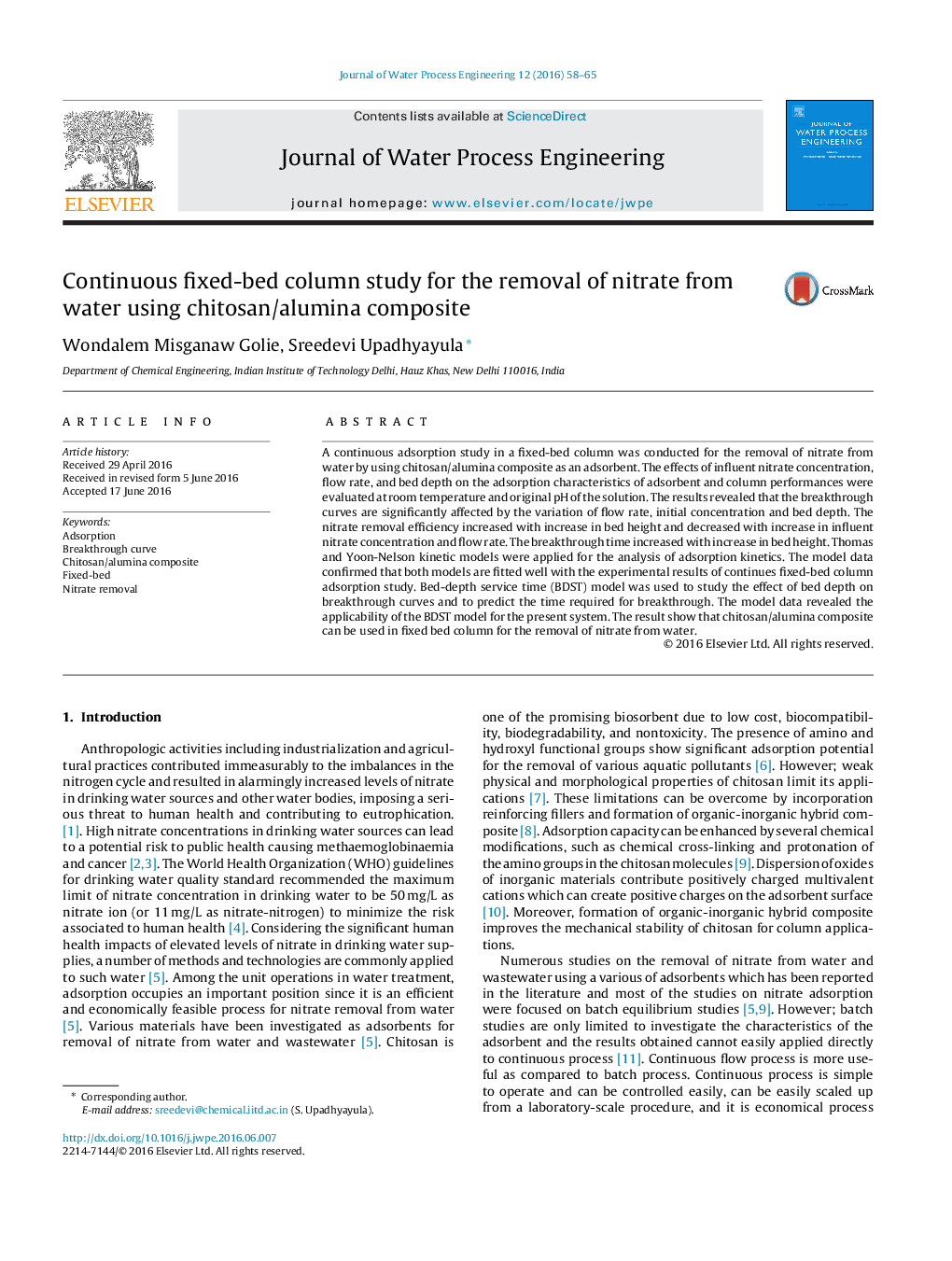| Article ID | Journal | Published Year | Pages | File Type |
|---|---|---|---|---|
| 232416 | Journal of Water Process Engineering | 2016 | 8 Pages |
•Chitosan/alumina composite is prepared for nitrate removal from water.•Effects of flow rate, influent nitrate concentration and bed depth on the performance of column.•Percentage of nitrate removal increases with increase in bed depth.•Thomas, Yoon-Nelson and BDST model models are applied to the experimental.
A continuous adsorption study in a fixed-bed column was conducted for the removal of nitrate from water by using chitosan/alumina composite as an adsorbent. The effects of influent nitrate concentration, flow rate, and bed depth on the adsorption characteristics of adsorbent and column performances were evaluated at room temperature and original pH of the solution. The results revealed that the breakthrough curves are significantly affected by the variation of flow rate, initial concentration and bed depth. The nitrate removal efficiency increased with increase in bed height and decreased with increase in influent nitrate concentration and flow rate. The breakthrough time increased with increase in bed height. Thomas and Yoon-Nelson kinetic models were applied for the analysis of adsorption kinetics. The model data confirmed that both models are fitted well with the experimental results of continues fixed-bed column adsorption study. Bed-depth service time (BDST) model was used to study the effect of bed depth on breakthrough curves and to predict the time required for breakthrough. The model data revealed the applicability of the BDST model for the present system. The result show that chitosan/alumina composite can be used in fixed bed column for the removal of nitrate from water.
